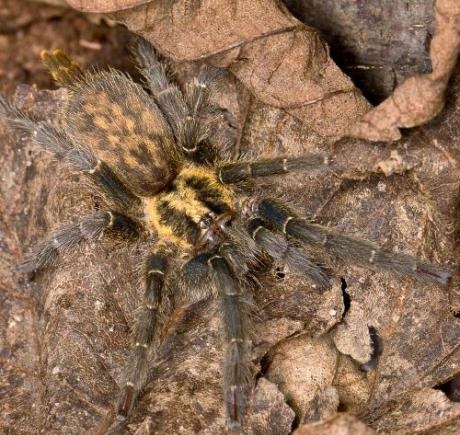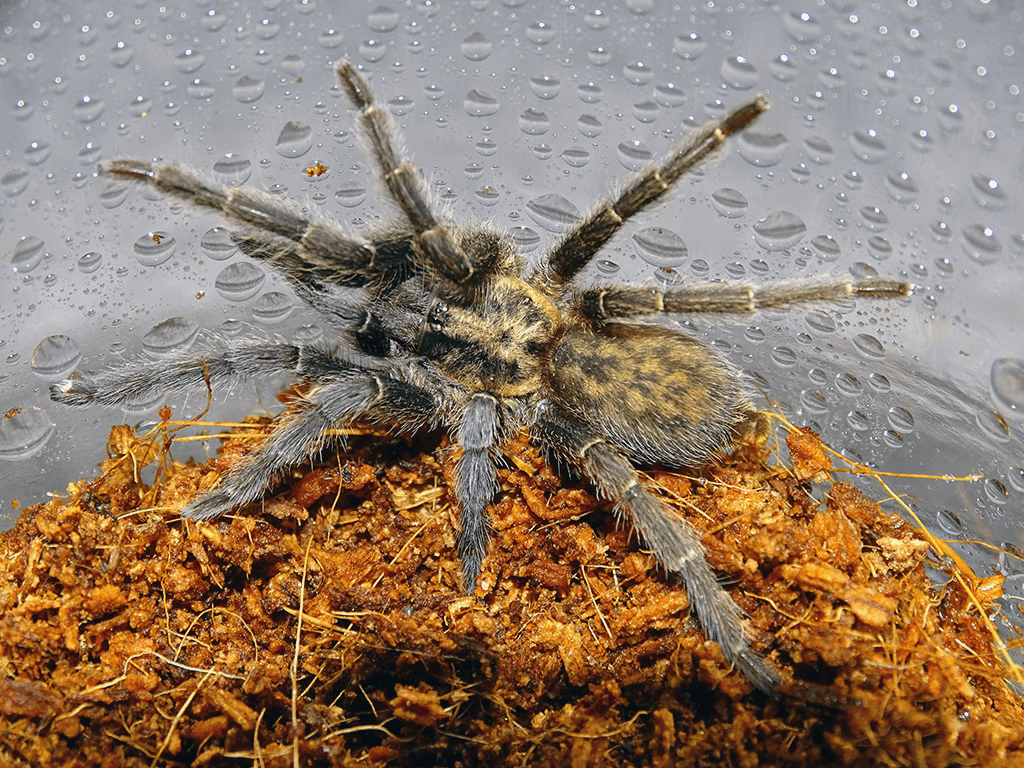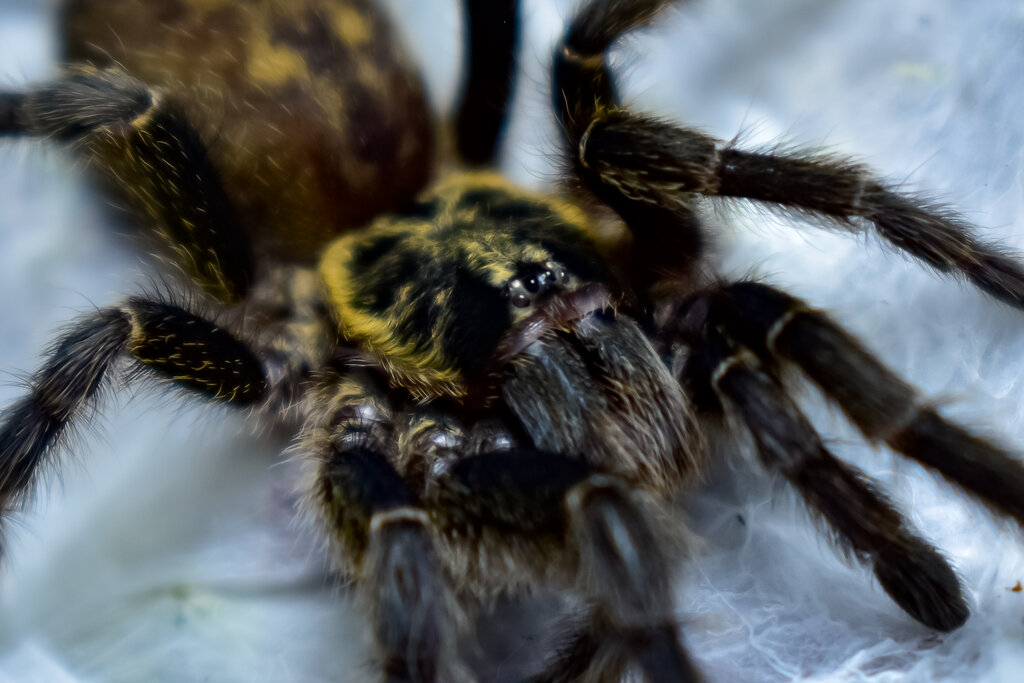Heterothele villosella, commonly known as the Tanzanian Chestnut or Tanzanian Chestnut Baboon Spider, is a fascinating species of tarantula native to Tanzania. This dwarf tarantula is notable for its unique physical characteristics and ecological role within its habitat. Understanding the habitat and distribution of Heterothele villosella is crucial for assessing its ecological significance and informing conservation efforts. This article explores the species’ taxonomy, geographic distribution, natural habitat, factors influencing its distribution, conservation status, and ongoing research.

Overview of Heterothele villosella
Taxonomy and Classification
Heterothele villosella belongs to the family Theraphosidae, which encompasses tarantulas. Its classification has been subject to scrutiny, with some references indicating that its taxonomic status may be uncertain due to historical documentation issues.
Physical Characteristics
Heterothele villosella is characterized by its small size, with females reaching up to 3 inches and males around 1.5 inches. The species exhibits a distinctive chestnut coloration with a starburst pattern on its carapace, making it visually striking among tarantulas.
Behavior and Diet
This species is primarily fossorial, meaning it prefers to burrow, but it is also known for its heavy webbing behavior. Heterothele villosella is generally calm and exhibits communal tendencies, allowing for multiple individuals to coexist in shared enclosures. Its diet consists mainly of insects, which it captures using its webbing and ambush techniques.

Geographic Distribution in Tanzania
General Distribution Range
Heterothele villosella is predominantly found in various regions of Tanzania, with its distribution closely linked to specific environmental conditions.
Key Regions Where Heterothele villosella is Found
- Northern Tanzania: This region, known for its diverse ecosystems, provides suitable habitats for Heterothele villosella.
- Central Tanzania: The central areas, characterized by savannas and forests, support the species’ ecological needs.
- Other Notable Areas: Additional populations have been documented in various locales across Tanzania, contributing to the species’ overall distribution.
Maps and Visual Aids
Visual aids, such as distribution maps, can enhance the understanding of Heterothele villosella’s geographic range and habitat preferences.
Natural Habitat
Description of Typical Habitats
Heterothele villosella thrives in several natural habitats, including:
- Forests: Dense canopy environments provide ample cover and humidity.
- Savannas: Open grasslands offer a different set of ecological dynamics conducive to the species.
- Rock Outcrops: These areas provide shelter and hunting grounds for the tarantula.
Habitat Preferences
The species shows a preference for specific temperature and humidity conditions, thriving in environments with moderate humidity levels (60-70%) and temperatures that support its metabolic needs.
Soil and Vegetation Types
Heterothele villosella prefers sandy or loamy soils that facilitate burrowing and webbing. The vegetation types in its habitat range from dense underbrush in forests to sparse grasses in savannas.
Seasonal Variations in Habitat
Seasonal changes in weather patterns can significantly affect the availability of resources and the overall habitat quality for Heterothele villosella.

Factors Influencing Distribution
Climate and Weather Patterns
The distribution of Heterothele villosella is heavily influenced by climate, with temperature and rainfall patterns dictating habitat suitability.
Availability of Food Sources
The presence of prey species is crucial for the survival of Heterothele villosella, as it relies on a steady supply of insects.
Presence of Predators and Competitors
Natural predators and competition with other species can impact the population dynamics of Heterothele villosella.
Human Activities and Their Impact
Human activities, such as habitat destruction, urbanization, and agricultural practices, pose significant threats to the distribution and survival of Heterothele villosella.
Conservation Status
Current Conservation Status of Heterothele villosella
The conservation status of Heterothele villosella remains a concern, as habitat loss continues to threaten its populations.
Threats to the Species and Its Habitat
Key threats include habitat destruction due to deforestation, urban expansion, and agricultural encroachment, which diminish the available natural habitats.
Conservation Efforts and Initiatives
Efforts to conserve Heterothele villosella include the establishment of protected areas and research initiatives aimed at monitoring and preserving its populations.

Research and Studies
Summary of Key Research Findings
Research on Heterothele villosella has provided insights into its behavior, habitat preferences, and ecological role, underscoring the importance of continued study.
Ongoing Studies and Projects
Various ongoing studies focus on the species’ ecology, population dynamics, and responses to environmental changes, contributing valuable information for conservation strategies.
Contributions of Research to Conservation
Research findings are instrumental in guiding conservation efforts, informing policy decisions, and enhancing public awareness about the species.
Conclusion
Understanding the natural habitat and distribution of Heterothele villosella is vital for its conservation and ecological significance. Future research should focus on the impacts of climate change and human activities on its populations, as well as the effectiveness of conservation measures. By prioritizing the study and protection of this unique tarantula species, we can ensure its survival and the health of the ecosystems it inhabits. Meta Description: Explore the natural habitat and distribution of Heterothele villosella in Tanzania, including its ecological preferences, key regions, and conservation status.

